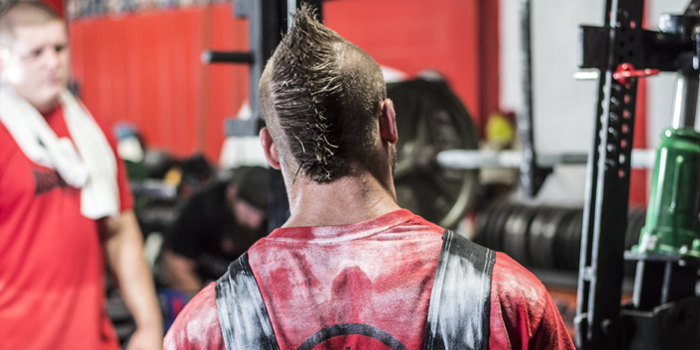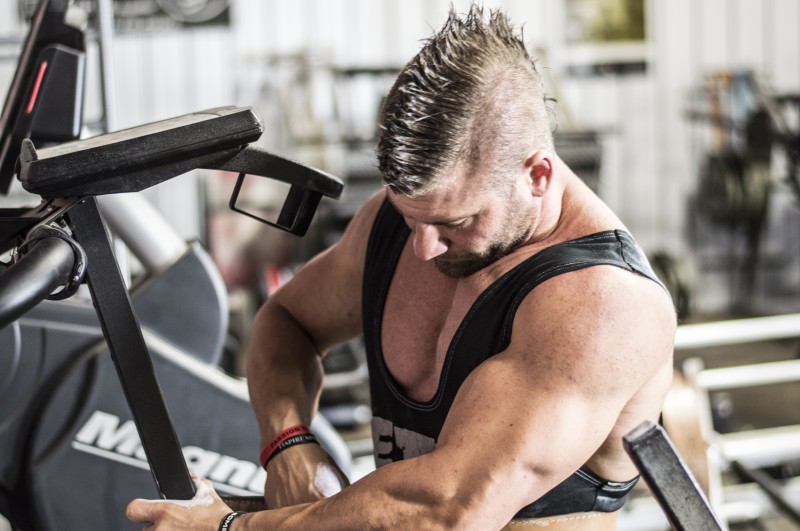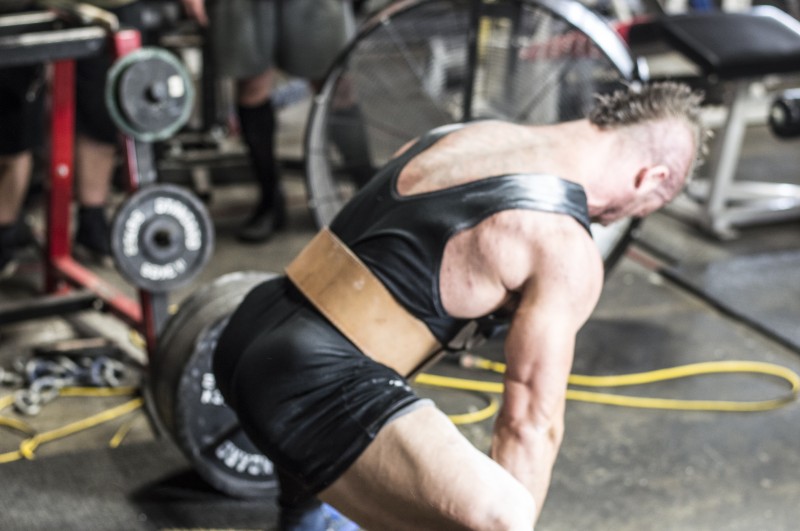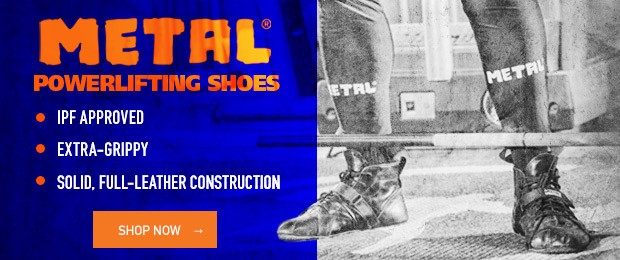
For someone in their first few years of training for powerlifting there is one weak point that stands out above the rest, both for how common it is and for how crucial it is to address. Addressing weak points is about as far from a game-changing idea as you can get; truthfully, it been discussed ad nauseam. The subject of this article differs in an important way: this weak point isn’t a physical one.
Early in your powerlifting journey, the only weak point you need to concern yourself with is accountability.
Training in this stage does not need to be complicated. It’s a three-lift sport, so focus on being able to perform those three lifts as best you can. Train with loads that allow for solid technique and have those loads get progressively heavier. Compliment your competition lifts with hypertrophy work, targeting the areas that benefit each lift. That may sound stupidly simple, but it should be. The hard part is the effort and time it takes for this process to bear fruit, and that is where the weak accountability rears its head.
As I write this article, I find myself wrestling with the futility of the subject. The intent is to serve as a wake-up call for individuals whose training is being negatively impacted by a lack of accountability, and to present taking ownership of your lifting as the solution. The issue is that no one wants to take ownership of their shortcomings. I would call that weak accountability, and it will make a lifter find fault in everything around them rather than their self.
Yes, you may have a coach or team behind you and a program you follow, but at the end of the day the effort will come from you and you alone. Your personal effort is where you should look to improve, but that requires acknowledging it as an issue. Emotionally it is much more comforting to create issues extraneous to yourself, such as your program, coach, or partners. Some may reject all my points, purely to avoid the emotional discomfort. Those with a little more fortitude, however, may come to realize they’ve been looking for progress in the wrong places.
WATCH: Table Talk — Sticking Points and Longevity for Raw vs Gear
For those that can handle reality, let me start by being blunt: your technique for all three lifts needs work. In all seriousness, I believe that is a helpful comment for a lifter to hear, as I have experienced the benefit firsthand. At one point I had convinced myself, in my newbie delusion, that my bench press technique was “dialed-in." Looking back, I think I was basing that entirely off having a strong bench when compared to my squat and deadlift.
That delusion was shattered when I attended a hands-on seminar and had my bench thoroughly critiqued.
The criticism was constructive, of course, but I certainly wasn’t expecting so many corrections. This may have been frustrating to accept, but opening myself up to the idea of further improving technique allowed me to make great strides. The continued belief that my form was “solid” would have lead to stagnation.
Amongst new lifters there is a resistance to identifying technique as an issue. It sometimes seems as though new lifters expect to be a pro overnight, which isn’t surprising since this generation (which includes me) has been raised on participation trophies and instant gratification. Once again, due to a lack of accountability, the blame is shifted elsewhere.
If you won’t address this mental weak point and take accountability for your performance, then you’ll likely land on one of a few common scapegoats to excuse any issues (lack of progress, relatively weaker lift, etc.). This article will address the short-comings of some of the most common.
I’ll start with a pet peeve of mine, and force myself to be brief (to avoid the article turning into a rant on a singular point). No issue you currently have will ever be fixed by doing more one-rep max work. There is going to be some breakdown of technique, especially as a beginner, when you take a max effort lift. Practicing perfect technique should be your focus at this point, so why would you put your effort into a sloppy lift?
The downside is deeper than missing out on quality lifting. That max effort lift is going to have a greater risk of injury, which is fair enough on the platform, but totally unnecessary in the gym. It will be harder to recover from, which will impact the rest of your training cycle, and that’s whether you hit it or not. If you miss, you’re not only compromising physical recovery, but your morale as well. I understand the urge to go for a big lift, but save it for the meet! Let’s move on before I get an ulcer.
As mentioned earlier, addressing physical weak points is a popular topic. That popularity is justified in the case of intermediate and advanced lifters, but where beginners are concerned, the concept loses its merit. Having a beginner target specific weak points is a concept I’ve seen criticized before, but usually with very surface level critiques, which may be why said critiques fall on deaf ears.
RELATED: Find Your Weak Points By Becoming Strong
It’s simply argued that as a beginner, everything is weak, so you need to cover your bases and strengthen in a more general fashion. I do agree with that, but also believe a deeper look at weak points provides more rationale as to why they shouldn’t be a concern for beginners. I’ll use a conventional deadlifter as an example.
Our example lifter notices they always struggle with the lockout of their deadlift, so they label that a weak point and focus on addressing the top half of the deadlift (rack pulls, accommodating resistance, anything to build that lockout). Unfortunately, this doesn’t provide the boon our lifter was hoping for. So what went wrong? This lifter’s inexperience made it difficult for them to view the lift as a whole; you might say they couldn’t see the forest through the trees.
While it’s true the lockout was visibly a struggle, the root cause was poor shoulder positioning at the start of the lift, which lead to rounding of the back, and compromised the lockout. No amount of hammering the top half of that deadlift would fix a technical issue occurring at the start. Don’t waste time misdiagnosing weak points when you’re at a point where technique is so much more likely to be the cure. A solid program won’t be neglecting any aspect of the lifts to begin with, so putting more emphasis on any one aspect will lead you to doing too much work, or inadvertently creating a true weak point if you replace something you didn’t realize the importance of.
The thread of effective practices being implemented at the wrong time continues with our next point, which is implementing specialized movement variations. Here I’m referring to movements that are variants of the main lifts, typically utilized in conjugate training, but I’ve seen them programmed into varied methodologies. Much like weak point training, specialty exercises have far more use for the more advanced lifter.
These specialty movements present a similar issue to weak point training: by emphasizing a particular point in the lift you miss out on the development of the lift as a whole.
Keep in mind there is only so much workload you can recover from, so it’s logical to spend that recovery on movements that will have the most benefit to your competitive lifts. The competitive lifts themselves are the most obvious horse to bet on, followed by similar movements. The more a specialized movement differs from the competition lift, the lower magnitude of its benefit, whereas a movement with only slight variation can still have carry-over for technique.
Combining the use of highly varied movements with frequent rotation of movements worsens the issue, as lifts are often swapped out before any physical adaptation can occur. The difference for an advanced lifter is that they’ve already maximized the benefits of technique and hypertrophy. At that point, addressing the minutiae of each lift (via specialty movements, weak points) is a solid course for continued progress.
Using these movements as a beginner could be compared to attending university before elementary school; there is nothing wrong with the content, but it’s only effective if you have the foundation to apply it properly. If it’s merely a craving for variety turning you to the conjugate style, perhaps a three-lift sport just isn’t for you.
My last point is a sort of escalation of the previous two. Some lifters will go beyond simply tweaking a few movements and jump ship altogether, a practice often referred to as program hopping. Let me make something very clear before I continue: a solid program is very important, and if you truly have reason to believe you’ve been using an utterly broken one then by all means jump ship. The thing is, most programs are based around sound principles. There’s a variance in the effectiveness with which those principles are applied, and I certainly believe there is a best way to train, but there are also many good ways to train.
In most cases, there is likely more benefit to consistency than a marginally better program.
You’ll likely end up disappointed with the difference your new program makes and worse still you may be starting a habit of program hopping. If you’re switching programs looking for a sort of aha moment where things click and your lifts leap forward then let me say this: I’ve witnessed those firsthand, and they’ve invariably been the result of technical improvements.
If these methods are being turned to due to weak accountability, then what does strong accountability look like? In the short term, strong accountability means going into each session with purpose, being deliberate with every rep, and endeavoring to make each rep the best you can. In the long term, it’s accepting that the strength you want will not develop overnight. That acceptance is necessary to maintain confidence in the ability of yourself and your program to get results and stay the course with consistency.
If you’re in your first few years training for powerlifting and have been turning to these scapegoat techniques then I urge you to turn to yourself instead. I’ll bet you realize you could tighten up your training form, so commit to that, and hold yourself accountable.
Jack O’Rourke has been working in the fitness industry as a personal trainer since 2011. In June, 2012 he competed in his first powerlifting meet and has been actively competing ever since. His ongoing goal is to improve his own lifting, while also working to ensure anyone pursuing fitness goals has the information they need to succeed. He currently trains at Keyhole Barbell, where he completed an internship with Swede Burns and uses the 5thSet method.












One more excuse down the drain! Thank you very much for this article. Impressive as heck.